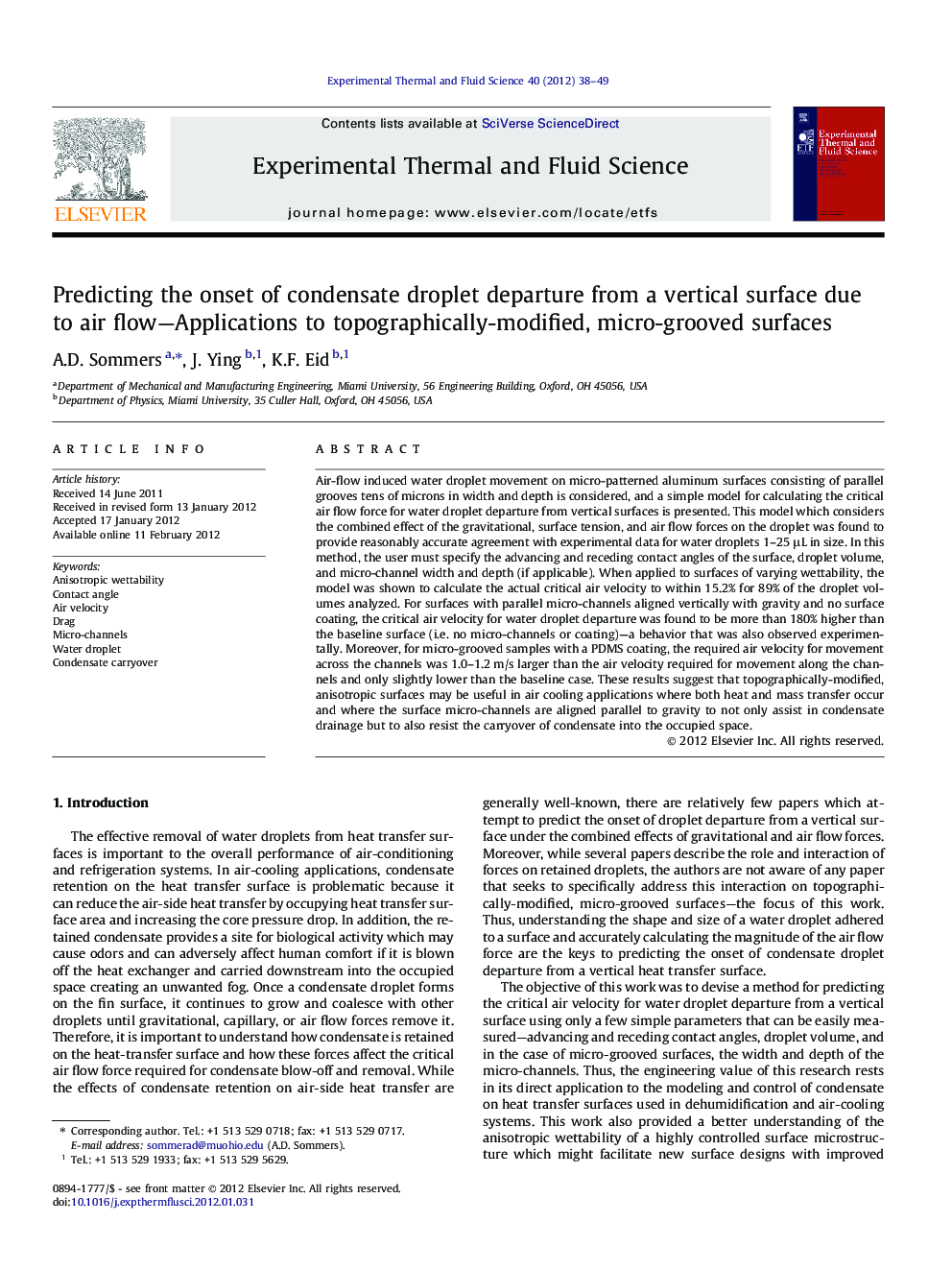| کد مقاله | کد نشریه | سال انتشار | مقاله انگلیسی | نسخه تمام متن |
|---|---|---|---|---|
| 652179 | 1457436 | 2012 | 12 صفحه PDF | دانلود رایگان |

Air-flow induced water droplet movement on micro-patterned aluminum surfaces consisting of parallel grooves tens of microns in width and depth is considered, and a simple model for calculating the critical air flow force for water droplet departure from vertical surfaces is presented. This model which considers the combined effect of the gravitational, surface tension, and air flow forces on the droplet was found to provide reasonably accurate agreement with experimental data for water droplets 1–25 μL in size. In this method, the user must specify the advancing and receding contact angles of the surface, droplet volume, and micro-channel width and depth (if applicable). When applied to surfaces of varying wettability, the model was shown to calculate the actual critical air velocity to within 15.2% for 89% of the droplet volumes analyzed. For surfaces with parallel micro-channels aligned vertically with gravity and no surface coating, the critical air velocity for water droplet departure was found to be more than 180% higher than the baseline surface (i.e. no micro-channels or coating)—a behavior that was also observed experimentally. Moreover, for micro-grooved samples with a PDMS coating, the required air velocity for movement across the channels was 1.0–1.2 m/s larger than the air velocity required for movement along the channels and only slightly lower than the baseline case. These results suggest that topographically-modified, anisotropic surfaces may be useful in air cooling applications where both heat and mass transfer occur and where the surface micro-channels are aligned parallel to gravity to not only assist in condensate drainage but to also resist the carryover of condensate into the occupied space.
► We present a force-based model to predict air velocity required for condensate carryover.
► Micro-grooved surfaces help resist condensate carryover and aid in condensate drainage.
► Critical velocity is calculated within 15.2% for 89% of the droplet volumes analyzed.
► Critical velocity for droplet departure is more than 180% higher on micro-grooved surfaces.
► For PDMS coated surfaces, velocity across channels is 1.0–1.2 m/s higher than along them.
Journal: Experimental Thermal and Fluid Science - Volume 40, July 2012, Pages 38–49